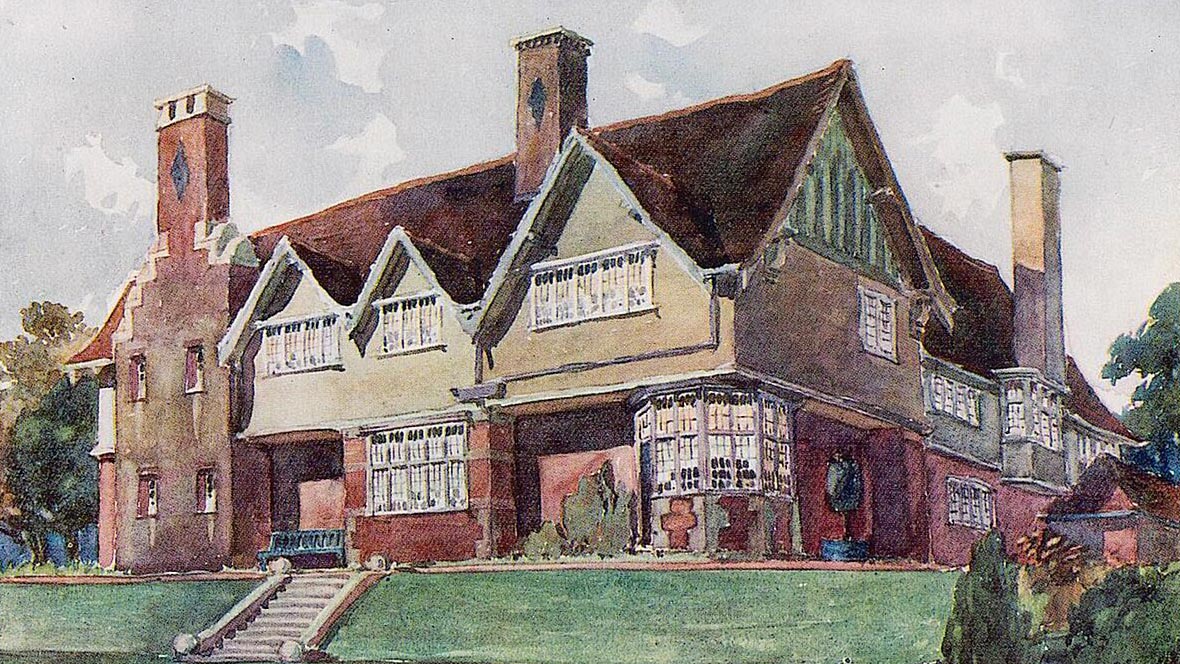
Bournville
Birmingham, United Kingdom
Former company town in England, based on the garden city ideals.
| Garden City Type: | Former company town |
| Country: | United Kingdom |
| City: | Birmingham |
| Years of construction: |
1893 Start construction
|
| Initiator/client: | George Cadbury |
| Architect or related: |
William Alexander Harvey William Alexander Harvey (11 April 1874 – 6 February 1951) was an English architect. He was just 20 when, in 1895, he was appointed by George Cadbury to work on houses in Bournville. When in 1900 the village became the responsibility of the Bournville Village Trust, Harvey remained in the Trust's employment until 1904 when he |
| Heritage status: | No |
| General condition of Garden City: | Good condition |
General description
The workers of English chocolate factory Cadbury were treated with great respect and relatively high wages and good working conditions. Cadbury also pioneered pension schemes, joint works committees and a full staff medical service.
In 1893, George Cadbury, one of the owners, bought 0,5 km2 of land close the factory. He planned, at his own expense, a model village which would "alleviate the evils of modern, more cramped living conditions". By 1900, the estate included 313 cottages and houses set on 1,3 km2 of land, and many more similar properties were built in the years. Resident architect William Alexander Harvey was instructed that Bournville "intended to make it easy for working men to own houses with large gardens, secure from the dangers of being spoilt either by factories, or by the interference with the enjoyment of sun, light and air".
From 1900, development of the village became the responsibility of the Bournville Village Trust.
Architecture / Urban planning
The Cadburys were particularly concerned with the health and fitness of their British workforce, encouraging swimming, walking and indeed all forms of outdoor sports. They incorporated park and recreation areas into the Bournville village plans. At Rowheath football and hockey pitches and a grassed running track were made. Rowheath Pavilion was opened in 1924 and served as the clubhouse and changing rooms for the sports playing fields, several bowling greens, a fishing lake and an outdoor swimming lido (closed in 1970). The Rowheath Pavilion itself, which still exists, was used for balls and dinners and the whole area was specifically for the benefit of the Cadbury workers and their families, with no charges for the use of any of the sporting facilities by Cadbury employees or their families. Cadbury's also built the Bournville indoor swimming baths on Bournville Lane (separate buildings for 'girls' and men), the Valley pool boating lake and the cricket pitch adjacent to the factory site.
The almost 'Arts and Crafts' houses were traditional in design, but with large gardens and modern interiors. Harvey's designs became a blueprint for many other model village estates around Britain. Because the Cadbury's were Quakers, no public houses were built in Bournville. It was only in the late 1940s that a licensed members' bar at Rowheath Pavilion was established.
Sources
- Website URL
- Publication
William Alexander Harvey, The model village and its cottages: Bournville (B.T. Batsford London, 1906).












